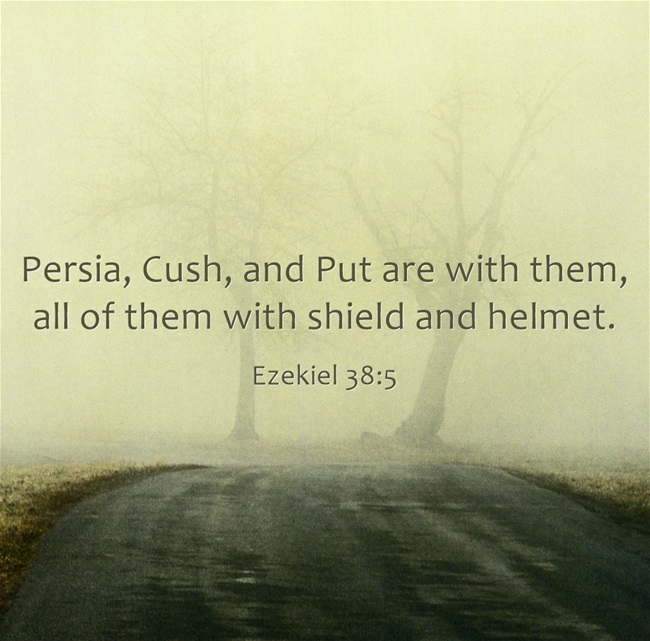Where is modern-day Persia? Who is the present-day Persia?
Who is Persia?
Persia is mentioned 33 times by the name in the Bible. Some of these mentions relate to Jerusalem and the Jews, while several others related to biblical prophecy, but who is Persia? How can we know? Are they still a nation today? Persia was a major player in world powers in the times of ancient Israel, and they played a significant role with the nation, but they are not know by Persia today, because like many nations today, they existed under a different name, and in some cases, are not even in the same, exact location as they were hundreds and even thousands of years ago. When Israel split into two kingdoms, the Northern Kingdom became known as Israel and they were carried away into captivity by the Assyrians, while the inhabitants of the southern kingdom became known as Judah, from which we get the name Jews. After Judah did the same abominable idolatrous practices as Israel did, they too were taken captive, but this time by the Babylonians. The Babylonians were the first of four great Gentile world empires which included Babylon, Medo-Persia, Greece, and Rome (Dan. 7:1-8), so Persia is mentioned in the Bible, and as is often the case, God used Medo-Persia as part of His judgment against the nation Judah. Consider how powerful the Medo-Persian’s were at one time. They were strong enough to bring down the dominant, world-power Babylon, but God is not finished with the nation Persia, as it appears they will still yet be a major player in the end-times, leading up to the second coming of Jesus Christ, however you won’t find Persia on the map today, so who is modern-day Persia and why does it matter?
Who is modern-day Persia?
Modern day Persia is thought to be the nation of Iran today. According to archaeological evidence found in modern day Iran, cuneiforms that date back to the Achaemenid era, tie in the name of Parsa (Persia) to present-day Iran. In 247 B.C., the Parthain Empire (known as the Persian Empire) covered much of the Middle East and Asia-Minor, and included the territories where the nations of Afghanistan, Pakistan, Turkmenistan, parts of Georgia, Turkey, Iraq, and even parts of Saudi Arabia are located, so imagine how immense this empire was at one time. There is little doubt that what was once Persia is now the nation of Iran. In ancient times, their powerful influence reached almost to China and India, so in their day, there was no match for the Medo-Persian Empire in the world. If you read about Persia in the Bible, you are reading about the ancient descendants of the nation Iran, and like the ancient power that the Persians were, the nation of Iran has one of the largest military forces in the world, close to one million strong (counting both active military personnel and reserves), and will be a major player on the world scene in the end-time scenario.
Where is Modern-Day Persia?
Since we know who the descendants of present-day nation of Iran are, it’s easy to know where ancient Persia is located on the world map today as the nation of Iran. Of course, Iran is no Medo-Persian Empire, because it’s not that expansive, but today, Iran is still one of the largest nations on earth, and is also one of the most dangerous. It wasn’t until 1935 that Reza Shah asked other nations around the world to stop referring to them as Persians and to formally refer to his country as Iran. Even so, most European map-makers ignored Reza Shah’s request and continued to call Iran, Persia. In the 7th century CE, the Arabs conquered Iran and converted the mainly Zoroastrian population to Islam. The Arabs pronounced the name Pars as Fars, and the word ‘Parsi’ means “of Pars” or “Persian.” The so-called the Fertile Crescent is included the modern nation of Iraq but also Iran, as at one time, Iraq (formerly Babylon in ancient times) was part of the Medo-Persian empire.
Is Persia Mentioned in Prophecy?
Persia, which we know today as Iran, is mentioned dozens of times in Bible prophecy, and may be part and parcel with the “kings of the east” (Rev 16:12) mentioned by the Apostle John in the Book of Revelation. These “kings of the east” appear to be a consortium of nations that are “east” of the nation of Israel and will apparently be brought together as part of a massive, end-time force that most believe will surround and move against Israel in the latter days, leading up to the time of Christ’s second coming, where “the kings of the whole world [will] assemble them for battle on the great day of God the Almighty” (Rev 16:14), and “they assembled them at the place that in Hebrew is called Armageddon” (Rev 16:16). When that exactly happens, no one can precisely say.
Conclusion
The bottom line with all prophecy is to warn all nations and all people that with the coming of the Lord comes His judgment and He will execute justice perfectly in His righteous indignation. At that time, “the beast and the kings of the earth with their armies gathered to make war against him who was sitting on the horse and against his army. And the beast was captured, and with it the false prophet who in its presence had done the signs by which he deceived those who had received the mark of the beast and those who worshiped its image. These two were thrown alive into the lake of fire that burns with sulfur. And the rest were slain by the sword that came from the mouth of him who was sitting on the horse, and all the birds were gorged with their flesh” (Rev 19:19-21). Such a horrific event should alert those who have rejected Jesus Christ as Lord, will face the wrath of God, but thankfully, for the children of God, “For God has not destined us for wrath, but to obtain salvation through our Lord Jesus Christ” (1st Thess 5:9).
Article by Jack Wellman
Jack Wellman is Pastor of the Mulvane Brethren Church in Mulvane Kansas. Jack is also the Senior Writer at What Christians Want To Know whose mission is to equip, encourage, and energize Christians and to address questions about the believer’s daily walk with God and the Bible. You can follow Jack on Google Plus or check out his book Teaching Children the Gospel available on Amazon.





